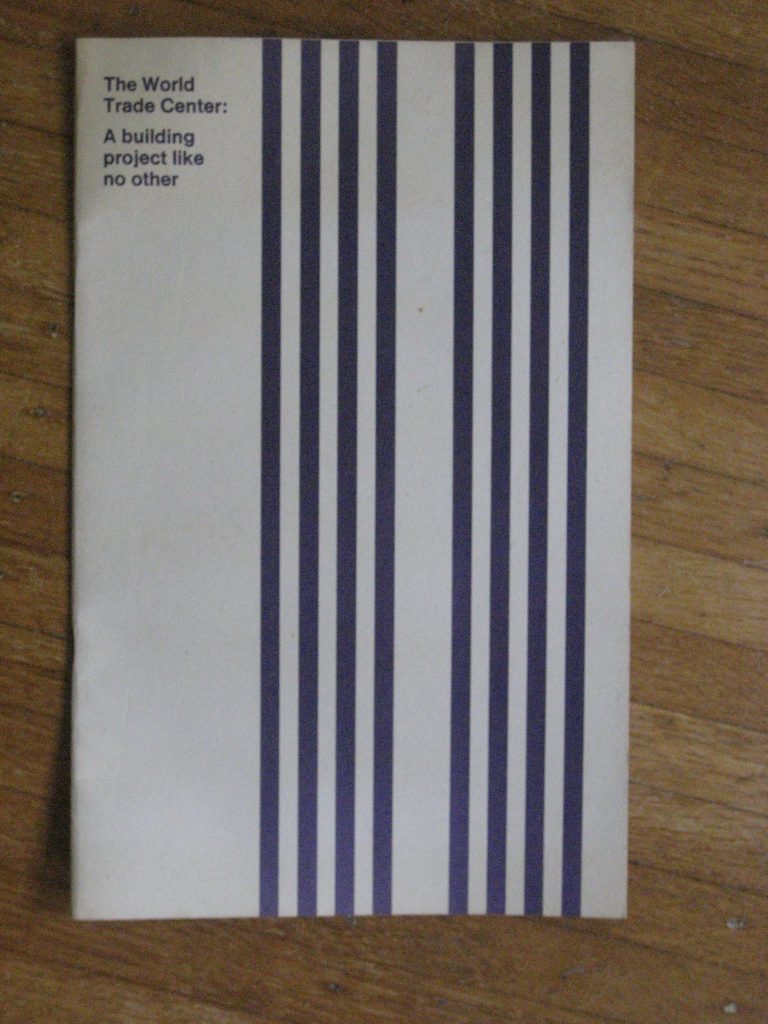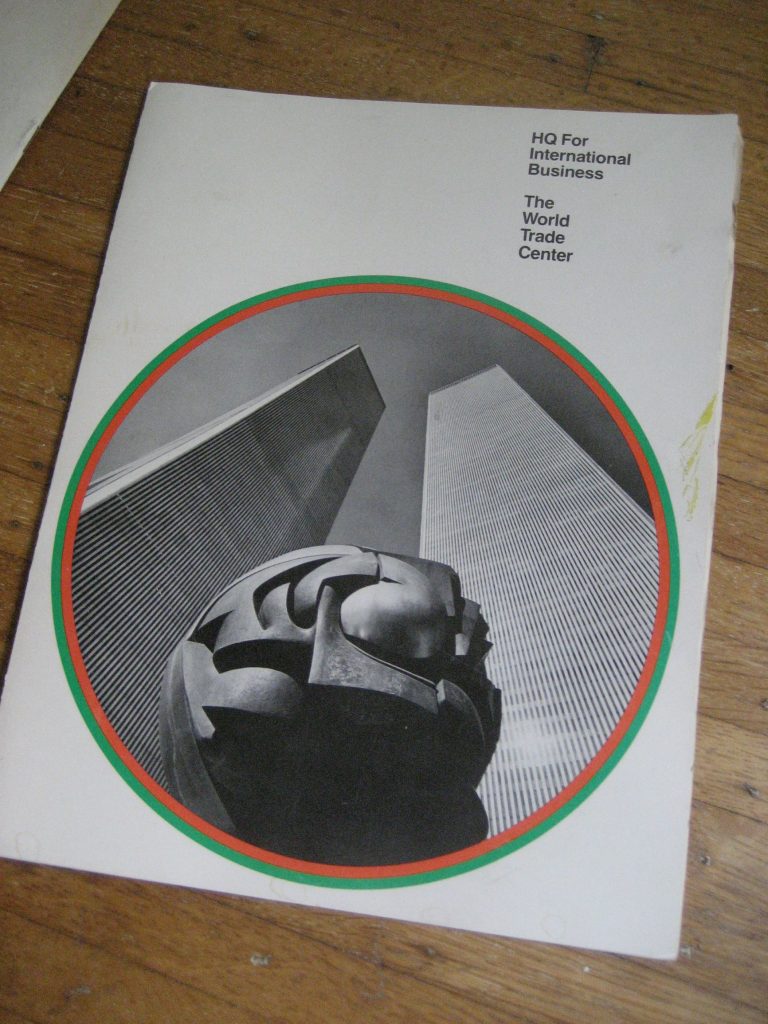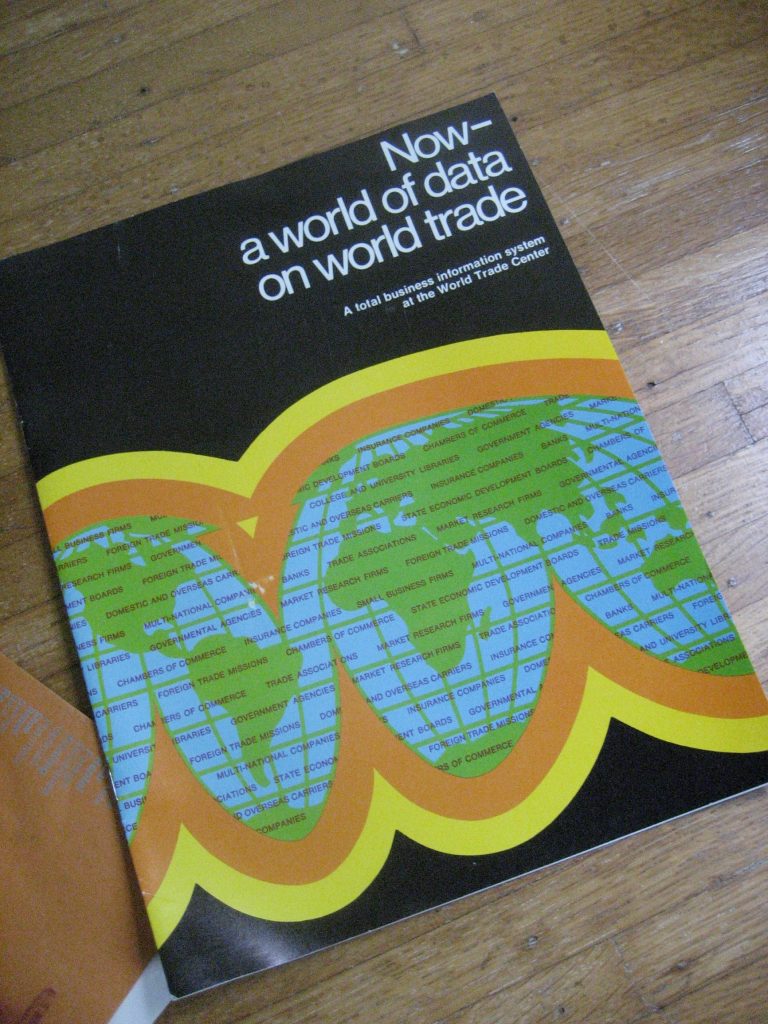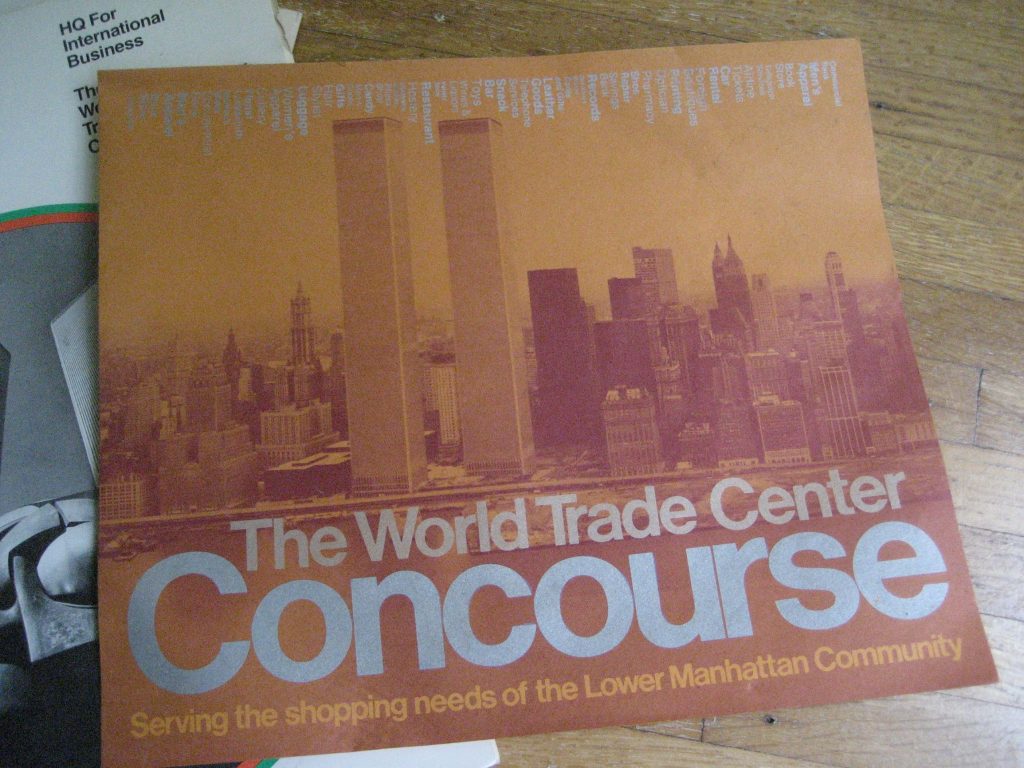
Cover of a World Trade Center brochure, “The World Trade Center: A building project like no other.” Publication date May 1970. Interior is photos and text about the Towers construction.
A couple of years ago I was going through a box of stuff — a.k.a. junk — that I’d schlepped from my parents’ attic to my house, and came across some World Trade Center brochures.
I had no memory of them at all, at first. But something has since seeped back in. I think I was doing some sort of project for school. A research paper, maybe. I wrote to someone (The Port Authority? I think that might be it) for some information and received the brochures in the mail as the response.
I never visited the Towers. I didn’t realize that I’d never have a chance.
I took 9/11 personally, like many of us did — and for many reasons. But one of them, for me, was the destruction of the buildings themselves. I felt connected to them; I felt like they were “mine” in a way, and their destruction therefore felt — still feels — like a theft . . .

This brochure, “HQ For International Business,” has a business card stapled to the inside from a One World Trade Center observation deck manager. I wonder if possibly he’s the person who mailed the packet to me . . . he also enclose a reprint of a New York Times article from 1972, “New York’s View From the Top,” by Paul J.C. Friedlander.


